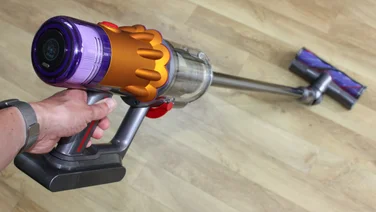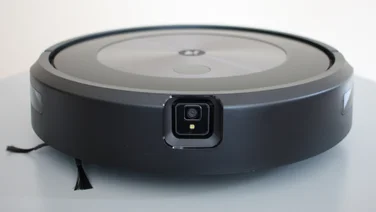To help us provide you with free impartial advice, we may earn a commission if you buy through links on our site. Learn more

There are countless robot vacuum cleaners available, all of which have been designed to save you time and effort when cleaning your home. However, with prices varying from a couple of hundred pounds to well over £1,000, not all robot vacuums are created equal.
To work out which robot vacuums are the best and which represent value for money, we perform a series of tests designed to evaluate various aspects of their performance during our review process. Below, you’ll find a breakdown of that process and each of the areas it covers.
How we test robot vacuum cleaners: Setup, mapping and navigation
We start by setting the robot up. This tends to be a more involved process than it is with regular vacuum cleaners, as the robots usually need a base station and to be connected to Wi-Fi. Each robot is set up in the same location in our test house, so we can time how long it takes to clean a specific area and directly compare it to robots we’ve reviewed previously.
This space has several obstacles that can trap a robot, including cable nests, furniture legs, protruding doorway sills, awkward doormats and a mixture of carpet, hard floor and rugs.
Later on in the testing process, we’ll also move the robot to another floor of the house, to test how well the robot can cope with creating and switching between multiple maps.
READ NEXT: Best cordless vacuum cleaners
How we test robot vacuums: Cleaning ability
Arguably, the most important tests we do are our cleaning tests. These involve vacuuming up spillages of rice, flour and pet hair. We perform these tests on both short-pile carpet and hard floor.
We use the same volume of spills every time – 50g of rice, 50g of flour and 5g of pet hair – so that every robot is tested in the same way. Where possible we instruct the robot to perform a spot clean or area clean of around 1.5m2, which has the spill in the middle of it. We weigh the robot’s collection bin before it starts and after it’s finished, so we can establish exactly how much of each mess it managed to collect.

We’ve deliberately chosen tough materials for robots to clean up. Rice is prone to being scattered by over-enthusiastic sweeping brushes, particularly on hard floor. Flour gets stuck to robot wheels and spreads around before it can be gathered by the suction. It’s also notoriously tricky to tease it out of carpet. Pet hair is a real challenge to many robots, as it can get brushed aside by the sweepers and caught in the rollers.
Many robot vacuum cleaners also come with a mopping function. We test that by depositing small amounts of troublesome liquids onto hard floor, including mud, blackcurrant squash and tomato ketchup. These spills are left to dry before we clean them up to make the mopping process trickier.
How we test robot vacuum cleaners: Hazard detection
Some robot vacuum cleaners can spot a dropped object and avoid it. To test this function we send the robot on a cleaning run in an area that contains a dropped sock, a smartphone charging cable and a convincing-looking fake pet poo. These are well spaced out, so we can tell whether the robot is capable of avoiding some or all of the hazards.
READ NEXT: Best vacuum cleaners
How we test robot vacuum cleaners: Usability
Usability is really important with robot vacuum cleaners. Some extremely basic models can simply be sent on their way and will randomly move around until they think they’ve finished or need to recharge. Others come with highly sophisticated mapping and a smartphone app with which you control them.Robots with an app can often be programmed and controlled to a very high degree. We test all of every robot’s features to see how easy they are to implement. Most robots offer control over the amount of suction. If they use a map you can usually send them to specific areas or perform room-by-room cleans. We go through all these options to make sure we’ve got a thorough understanding of how good or otherwise a robot’s controls are.
If a robot’s base station has its own features, such as self-emptying or mop cleaning, we test those, too.
How we test robot vacuum cleaners: Refining our tests
Our robot vacuum cleaner testing process has been consistent over many years, meaning we can compare results and tell whether a new robot is better or worse than other robots we’ve tested. The tests are easily repeatable and controlled, meaning there’s very little variance in the testing conditions when we look at different vacuums.
We’re always looking for ways to improve our methodology, however, and add new tests and remove redundant or out-of-date ones when necessary.






